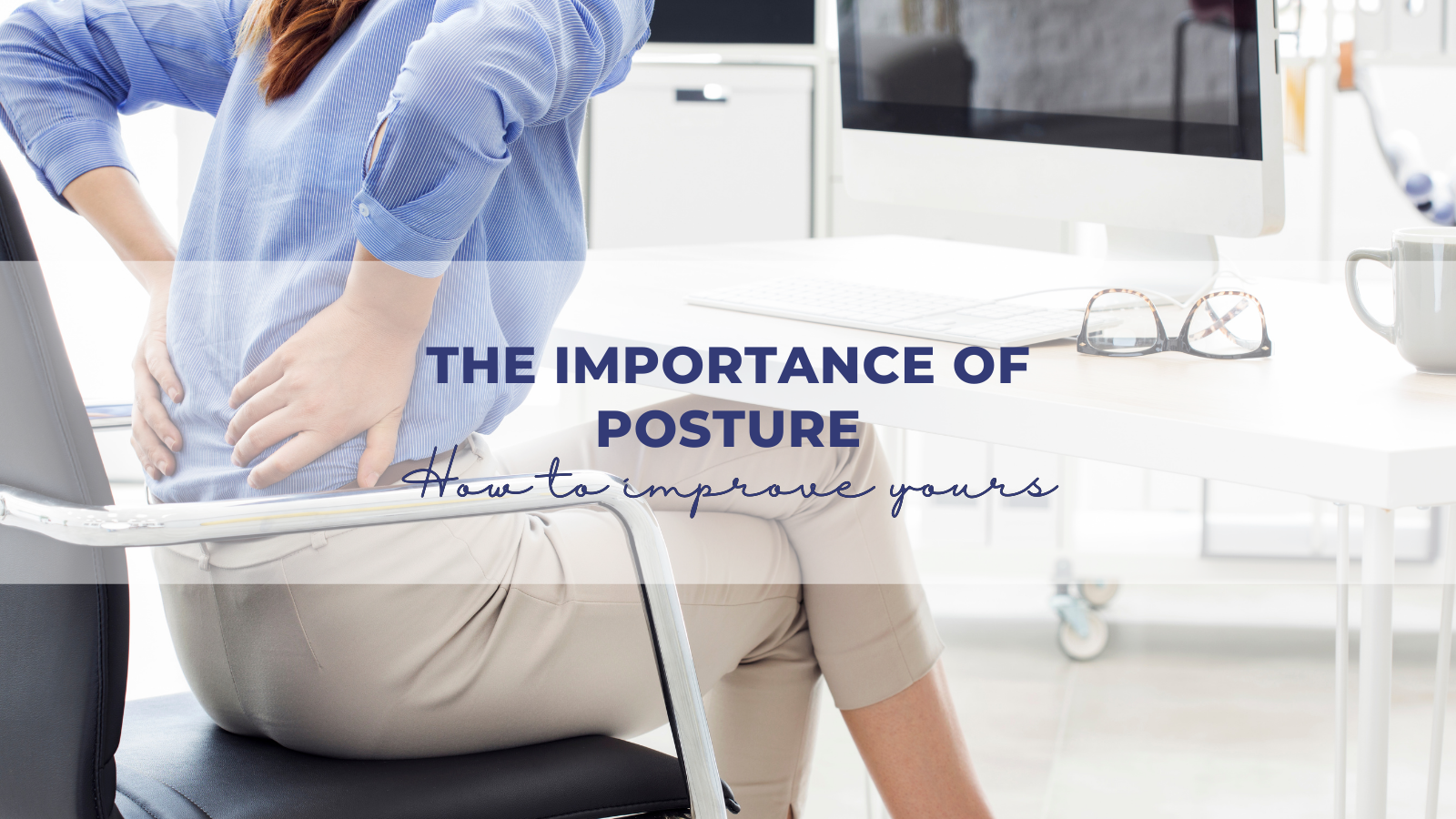
How to Improve Your Posture
The Importance of Posture and How To Improve Yours
Let's just be honest with ourselves for a moment - we're all guilty of bad posture. But who can blame us - many daily habits within our lives cause it.
From curling our necks scrolling through our phones to hunching our back as we sit for 6 hours a day at our desks, we're unconsciously repeating poor habits that lead to poor posture. As a result, we place excessive pressure on our muscles, bones, and ligaments.
1 in 4 Americans suffers from at least 1 back pain, with poor posture being one of the main culprits. With many of us doing desk work, this also adds to that statistic. We tend to overlook the benefits of practicing good posture and then pay the consequences for it later. But not on our watch. Keep on reading to understand the benefits of good posture and how you can slowly (but surely) improve yours.
Why Good Posture is Essential
Slouching, leaning forward, rounded backs– these are all examples of poor posture. This ultimately leads to issues such as:
- Back, neck and shoulder muscle tension. This pain then leads to tension headaches and migraines. Even children with poor posture are more prone to headaches.
- Misaligned or curved spine which over time results in greater injuries
- Slouching leads to poor digestion and poor breathing patterns due to the pressure from leaning forward.
This is why good posture is important – it prevents the issues stated above. Overall, it ensures a healthier and happier life.
The key to good posture depends on the positioning of your entire spine. You want to maintain a neutral spine and keep your body centred, whether you're moving or staying still. This places less stress on joints and muscles. Good posture means:
- Straight back.
- Head and shoulders aligned.
- Shoulders aligned with hips.
How To Improve Your Posture
As mentioned above, many of us are unaware of the habits that lead to poor posture. But not all hope is lost. There are many practices to help improve your posture and prevent muscle aches and pains. Be warned - it may feel uncomfortable at first when you practice sitting up straight. However, it'll all be worth it for the health benefits.
- Be mindful
It's time to build some mind and body connection. To correct your posture, you must first be aware of your current posture. Are you tilting your head too forward? Are your shoulders raised or neutral?
You need to become more mindful of your posture throughout the day. If you notice bad posture, straighten your back, lower your shoulders, and keep your head levelled.
- Ergonomic chair
Many of us spend hours a day sitting in our chairs. That's why practicing good posture while sitting is essential. One way to help improve sitting posture is by purchasing an ergonomic chair.
These chairs were designed to support our backs and encourage good posture. Just take a look at our ErgoTask and Ergo3D chairs. Every aspect of the chair, from the material to adjustable features ensures you can practice good posture and sit comfortably while you sit for hours at a time.
For example, the Ergo3D has a 4D adjustable armrest, allowing you to lower/raise, bring forward/back, and swivel it left/right. Beyond that the full lumbar support that both the Ergo3D and ErgoTask provides supports the spine preventing uncomfortable back pain.
- Ergonomic work set- up
Besides the chair, we can also create an ergonomic work set up to avoid bad posture and injuries as well. The positioning of your arms to your desk, the length of your elbows to your keyboard - it all matters for ergonomic purposes.
Experts recommend sitting at a slight recline in chairs. The Posture Ergonomic Chair has a ReclineRock feature that allows you to recline your chair or lock it in place if you're found your sweet spot. Just make sure to pull your shoulder back and relax them as you type away. Another important rule is to keep your elbows and knees at a 90-degree angle when sitting.
These adjustments to your work setup help improve your overall posture. This lowers the chances of chronic back and shoulder pain.
- Exercises
Any exercise that targets your back, shoulders and core will ultimately help improve your posture. Strengthening these muscles helps support the spine and keep it neutral.
From good old crunches to a yoga session, these exercises also help your build better posture when you practice good form.
- Stretch!
Stretching helps loosen tight and tense muscles. It also increases joint range of motion and flexibility which can improve your posture as you walk, sit, or lie down.
Some stretches to try out include the cat-cow, chest-up and superman. These stretches also encourage greater mind and muscle connection.
No matter how bad our posture is, it can always be improved. Once you incorporate these tips, the days of suffering from neck and back pain will be long behind you.





Leave a comment
This site is protected by hCaptcha and the hCaptcha Privacy Policy and Terms of Service apply.